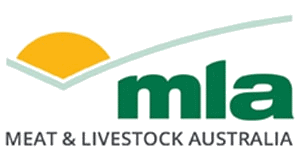Cost-effective testing of beef herds for Johne’s disease
| Project start date: | 01 May 2018 |
| Project end date: | 01 September 2019 |
| Publication date: | 17 June 2019 |
| Project status: | In progress |
| Livestock species: | Grassfed cattle |
| Relevant regions: | National |
|
Download Report
(2 MB)
|
|
Summary
This project was conducted to identify alternative, more cost-effective options to achieve the same or better confidence of disease freedom as achieved by the current strategy. We hypothesised that increasing pool size would reduce the costs without impacting the test sensitivity and specificity. Specifically, the project aimed to:
- estimate the effect of pooling on pooled HT-J sensitivity and specificity in a laboratory setting;
- model the HT-J herd-sensitivity and specificity achieved in reallife scenarios for farms of various sizes, with a range of disease prevalence levels; and to
- evaluate if herd environmental culture (HEC) currently recommended as equivalent to a ‘Check test’ for dairy herds could be used in a beef enterprise.
The results of this project suggest that the cost of Sample testing can be halved from $7200 to $3600 by switching from a pool size of 5 to 10, without any loss in test or herd-level sensitivity, i.e. by testing 30 pools of size 10 instead of the current approach of testing 60 pools of size 5. The results also suggest that substantial gains in herd sensitivity can be achieved for Check testing by testing 10 pools of size 10 instead of 10 pools of size 5, without increasing testing costs. The sensitivity analyses indicate that it is very important to maintain a perfect HT-J specificity. The laboratory results indicate that diagnostic laboratories should consider PCR inhibition when employing the pooled HT-J, with a current recommendation to test both neat (undiluted) and 5-fold diluted DNA extracts to check and relieve PCR inhibition.
We recommend that 30 pools of size 10 should be used instead of 60 pools of size 5 to reduce the costs for Sample testing while maintaining herd-sensitivity. We also recommend using 10 pools of size 10 for Check testing instead of 10 pools of size 5 to increase herd-sensitivity without increasing costs. A workshop of the stakeholders should be organised to discuss the results of the project and to decide upon approaches for modifying the J-BAS testing protocol in the future. Stakeholders would include representatives of the beef industry, Animal Health Australia as well as scientists and technicians from various State diagnostic laboratories using the HT-J for Sample and Check testing.
Further research should be conducted for field validation of the new pooling strategy recommended in this project and to find long-term solutions for PCR inhibition.
More information
| Contact email: | reports@mla.com.au |
| Primary researcher: | University of Sydney |


